The 2.7-Million-Mile Car
You Say You Want to Keep Driving Your Car for Years to Come? Listen to an Owner Who’s Covered Some Ground.
IrV GORDON OF Long Island, New York, currently owns an aluminum bodied ’23 Model T Ford sedan, a ’29 Packard Touring car and a ’49 Crosley Hot Shot that he bought for $10 and then totally restored.
But Irv is best known in automotive circles for collecting miles on his 1966 Volvo P1800S coupe. The car has gone 2.7 million miles and the Guinness Book of Records says it’s the world’s most-driven car.
Back in 1987, I did an article about Irv’s Volvo when it hit one million miles, so it was particularly interesting to finally meet him face to face 22 years later and ask him how he managed to put an additional 1.7 million miles on his 43-year-old Swedish car.
Irv’s explanation for keeping the car going so long is really simple:
• First, he obviously likes his car an awful lot.
• Second, he has no inclination to view a car as a status symbol. In fact, it’s just the opposite with him; he’s pretty humble about the whole thing.
• Third—and most important—Irv just follows the instructions and recommendations in his 1966 P1800S Owners Manual. And apparently that’s all he needs to keep on going mile after mile, because he has no deep dark automotive care secrets to reveal.
What he does anyone could do and come out ahead for it. When you “listen” to him, you’ll see what we mean.
A Talk With the Owner
Q. How did you learn to get so many miles out of a car?
A. I really didn’t have any special background. I was a science teacher for 35 years and I knew a little about mechanics. I read the owners manual. It says to do certain things. I just try to keep doing what the owners manual says. I have no special talent.
Q. There’s a man who babied a Corvette by driving it 290 miles in 37 years and changing the tires each time he used it. He described himself as being fixated on proper car care. Do people say you’re fixated like that?
A. That’s just the opposite end of the spectrum. I figure that a car is made to be used. If you’re not going to drive it—if you’re just going to put it in a garage and pull it into or out of a trailer, you might as well have a painting you can hang on the wall and just look at.
You know, an automobile is something functional. They do best when they’re doing just what they’re designed to do—be driven. You actually have a lot less trouble by driving a car a lot, than just letting it sit a lot.
Q. How much did the car cost you?
A. I bought it at the local Volvo dealer, in Amityville, Long Island, for $4150, on June 30, 1966.
Q. Does the car drive pretty much like it did in 1966?
A. Yes. It’s been a very comfortable car to drive all these years. Volvo had orthopedic-designed seats back in 1966. I mean, they had adjustable lumbar supports like new cars do today, but everything is mechanical rather than electrical.
It’s made to be a grand touring car; it was never designed to be a sports car. It’s made to be driven long distances, hour after hour, day after day at high speeds and it’s still very comfortable on the road.I drive back and forth across the country all the time.
On this particular trip, I am going from my home in Long Island, to Wisconsin and then to Boston for the National Volvo Club meet. Next, I’ll go from there to London, Ontario, Canada for the Canadian Volvo meet, before going home.
I was on the road all last month and will be again this month. That says something for the car’s comfort. As you can see, I’m still not crippled.
Q. When the car hit a million miles in 1987, it was highly publicized and we seem to recall Volvo taking it to lots of car shows.
A. I never let them transport the car. Actually, I let them do that once and they damaged the car. And ever since I refused to let them transport the car. If they want the car, I take it and go, but otherwise the car doesn’t get to go.
Q. Do you take the car in for its factory recommended service at the suggested maintenance intervals?
A. I try to never miss my 3500-mile oil change outs and there’s not much I do beyond that. I mean, I spray all the bushings with silicone spray myself. That’s no big deal. There are absolutely no grease fittings on the car anywhere.
The wheel bearings and so on get greased every 100,000 miles. I change belts and hoses and that kind of thing if they show deterioration and I do what the book (owner’s manual) says. There’s nothing special about the way I care for the car and have it serviced. I get the points and plugs changed every 20,000 miles. These are just things suggested by the people who built the car. Obviously, they know better than anyone how to care for it, so I follow their directions.
Q. What major work have you had done to the car in 43 years?
A. The engine was rebuilt by my Volvo dealer at 680,000 miles. It had nothing wrong with it then. I just never heard of an engine that went that long. I was getting nervous and I had them do it. I still have all the old parts at home. There was nothing wrong with them.
When my most recent rebuild was done, the mileage was 2.01 million and the amount of wear inside the engine was absolutely minimal. They “miked” everything (measured the wear on parts with a micrometer) and they checked the bore, the pistons, the rings, the camshaft, the crankshaft and the connecting rods. Everything was just about within factory tolerances. One cam bearing was broken, but it didn’t score the engine inside. Changing the oil seemed to be all it took to hold the engine together so long.
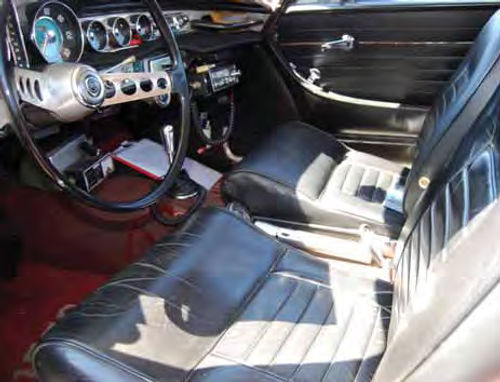
Q. Do you think it was the care you gave the P1800 or the quality Volvo built into it that made it last so long?
A. Oh, a combination, definitely. Let’s face it, the car could never have done what it’s done if it wasn’t built good— actually overbuilt.
Q. So how come the roads of America aren’t loaded with Volvo P1800s?
A. Unfortunately, not everybody who bought a P1800 took as good care of their car as they should have. There were a lot of those people who wanted a Ferrari, but couldn’t afford to buy one, so they bought something less expensive— like a P1800—and drove it like they were driving a Ferrari and then, that’s the end of the car. These are some of the people who, you know, think they’re the best drivers in the world and want to see just how much punishment they can give a vehicle before it falls apart. And then they blame the car.
Q. This brings up the question of whether you used any special driving techniques that contribute to the car’s high mileage.
A. I think I’m a good driver. I understand what the car was designed to do and don’t try to abuse it.
I’m not the first one out from the traffic light. I’m not the last one to hit the brakes before the next stop sign. I don’t drive in a manner that puts extra stress on the drive train. There are some people who want to see how fast they can kill something. I like to see how long I can make something last.
Q. Auto Restorer has noticed more people holding onto a car that they really like, instead of trading it in just because it’s getting a little old. They’re wondering if maybe, in years to come, there won’t be as much of the “I really should have kept that (whatever) model, it was really a terrific car.” Is this trend creating a new round of publicity for the P1800 you have kept for so long?
A. Maybe people are hearing about me. I get invited to go to a lot of shows and talk to people all over the country. The invitations to publicize the car are definitely there.
Q. So, do you see a trend with people holding onto cars longer?
A. I had a part-time job at a Volvo dealer when I was a teacher and I used to see people who brought their cars in for service.
It just amazes me how people can buy a $30,000 or $40,000 or $50,000 car and treat it like a disposable item. You know, they eat in it, they spill food in it and don’t bother to clean it up, they smoke and put holes in things, their kids jump around and pretty soon the inside of the car starts to get ratty looking. Then, people stop taking care of the car.
People buy a new car and care for it meticulously for the first six weeks. Then, after the first six weeks, it’s too much trouble to wash it and too much trouble to clean it. From that point, not only does the interior start to go, but the service starts to go, too. Americans also get tired of driving the same vehicle. To them, it’s every two or three years and they have to have something new. They have to keep up with the Joneses. They have to keep up with the people next door. The car is a status symbol.
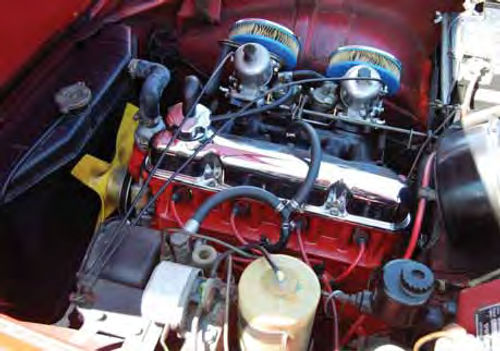
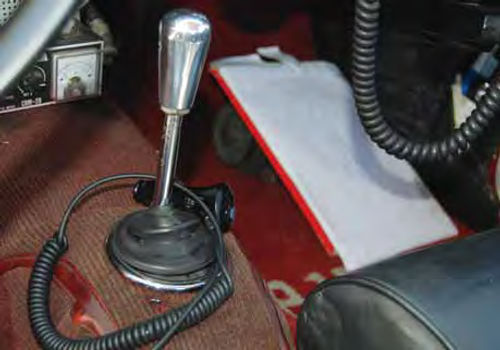
If they are not driving the latest, people feel they are getting behind. Lots of people go into debt to buy a car. People can’t afford a new car, but rather than taking care of their car, they just abuse it and run it into the ground.
However, I think that there are a lot of people that, since this recession started, are starting—just starting—to take better care of their car. They are starting to realize that if they don’t take care of a car, they’re going to be forced to buy a new car and they can’t afford that.
I don’t know if it’s going to get all the way to where the people will feel bad about selling the car they “should have kept.” I don’t hear many people saying they should have kept this one or that one. I was talking to people at one car show and they said they had a Volvo and loved their Volvo, but when I asked them if they were still driving it, they said they were driving a Chevy or something. Then, I asked what happened to the Volvo and they said it got rusty and they sold it and got another car.
Q. So, is your P1800 a better car than a new Volvo?
A. Oh, if anything, the new Volvo is a lot better car. The P1800 is a very nice car, but it has a lot more tendency to rust and to show wear and tear than a new car. The new car’s metallurgy is much better—the coatings and so on.
Nowadays, everyone thinks they can get in a car, turn the key and go. My car has a manual choke; people today don’t know how to use a manual choke. Many of them wouldn’t know how to drive a P1800. I have to let the engine warm up or else it chug, chug, chugs down the road. These cars need more understanding. People forget what it’s like to drive an older car.
Q. What does your car have in the way of features and options?
A. With these cars there weren’t many choices. All the cars were basically the same. Every one came with a four-cylinder engine with a cast iron block and cast iron head. The transmissions were all four-speeds. Electric overdrive was optional. Almost all P1800s had the same gear ratio. You couldn’t get a higher compression ratio. There was no supercharger or turbocharger. If you bought a Volvo sedan you got the same engine in a sedan body. They had “arm strong” power steering (it took strong arms to steer) and 4-60 air conditioning. That means you opened all four windows and drove 60 mph if you wanted to try to cool off.
I bought this car because a friend had shown me an advertisement in Car and Driver magazine for a P1800 convertible with air conditioning. Volvo Cars of Sweden never made a P1800 convertible, but the dealer where I bought my car used to cut the tops off and add air conditioning for a few bucks more.
But when I went to buy the air-conditioned convertible, it was almost the same price as a Corvette. There was no way I could afford that. I was a brand-new teacher. I made $4200 a year and the Volvo convertible with air conditioning cost $5000.
I couldn’t afford the convertible, so I bought the car I still own today, which was in the showroom. I did get an AM/FM radio, which was a big deal in 1966. It has no tape deck, no CD player and no satellite radio—I still have it.
Q. Did you do research on the P1800 before you bought it? Or were you drawn to the car because you watched “The Saint” a lot? (A ’60s TV show in which lead actor Roger Moore drove a P1800.)
A. I had owned two brand-new Chevrolets first. I started teaching in 1962 and I had to have a car to take me 125 miles per day, every day, to and from work. My first Chevy had some serious engine problems. Chevrolet was never able to fix them. I had the car about a year and a half and started getting stuck with it a lot.
I didn’t know what else to buy, so I bought another Chevrolet. The second one was worse than the first one. It broke down four blocks from the showroom the night I got it.
And things never got any better. General Motors told me I must have been abusing the car. They said it had to be my fault it broke. I had that car almost nine months because I couldn’t afford to do anything else about it.
As I said, a friend of mine told me about the P1800 convertible and showed me an ad. I took a test drive in the air conditioned convertible. In fact, we went out for three hours. In those days a dealer used to throw you the keys and say, “After I get you approved, we’ll talk when you get back.”
That time, I think we would not have come back after only three hours, except that we started running low on gas. That same night I came back and brought my father along so I could borrow some money from him. I traded in my Chevy, and I was happy it made it to the dealer without breaking down. I’m still driving the same car that was in the showroom that night.
Q. It looks like your tires are pretty new. Are you fanatical about something like that?
A. No, not fanatical, although I always have “good” tires. I run Bridgestones now. I have been running Bridgestones for over 30 years. I tried other brands, but these last the longest. The tires on the car now have about 30,000 miles of use on them. I get about 100,000 miles out of a set of tires and do the brakes at the same time—I also get 100,000 miles on the brake pads.
Q. Do you have trouble getting parts for your 1966 car?
A. No. Everything I’ve ever needed so far I have been able to get over the counter at my local Volvo dealer.
Q. Have you had body work done to your car?
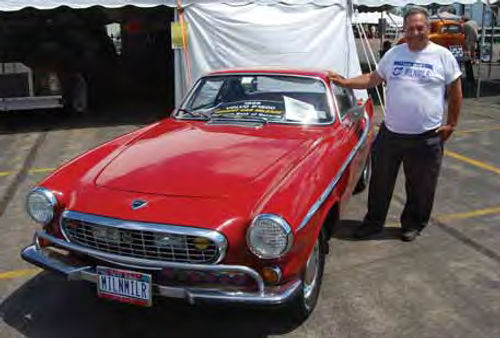
A. Of course. Once, a tractor-trailer backed into it; or over the nose I should say. One school bus backed into it from in front and one school bus backed into it from the rear. An Oldsmobile ran into it, too. A woman who was trying to parallel park damaged the left rear quarter panel. Always, the car has been parked when it was hit. That’s fortunate. But it has been hit and the nice thing about it is that the parts are still available from Volvo. I know a couple of good body shops on Long Island and they always do good work, knowing the importance of this car.
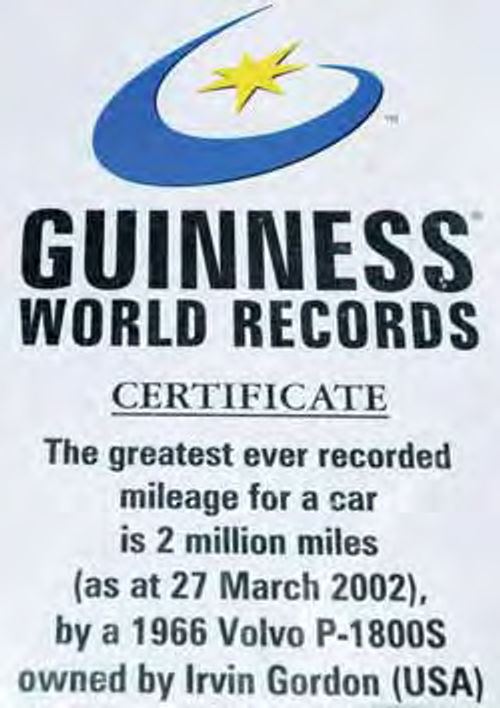
Q. Do you keep your car garaged?
A. I don’t have a garage. The car’s been outside 24 hours a day for 43 years and I live a half a block from the ocean. I drive it wintertime and summertime.
I used to go skiing with it every Friday night in New Hampshire or Maine. So, the car’s always in salt during winter.
In fact, being near the ocean on Long Island, it’s like it’s in a salt bath all day, all year long.
Q. We told you about the man who kept his Corvette 37 years and drove it just 290 miles. He put towels down every time he drove it to protect the door sill scuff plates. Do you do things like that?
A. I have driven this car regularly for 43 years and my doorplates are unscuffed, but I didn’t do that kind of stuff. There’s just no reason to put your foot on the plates. It would be awkward to stand on a doorsill.
This car is kept up strictly to drive it. I drive it everywhere. I take it for coffee in the morning.
The only time I don’t drive this car— and I have a new Volvo to drive—is when I’m going some place where I have to park where I can’t see the car. And then I don’t feel I can protect it as best I can.
















